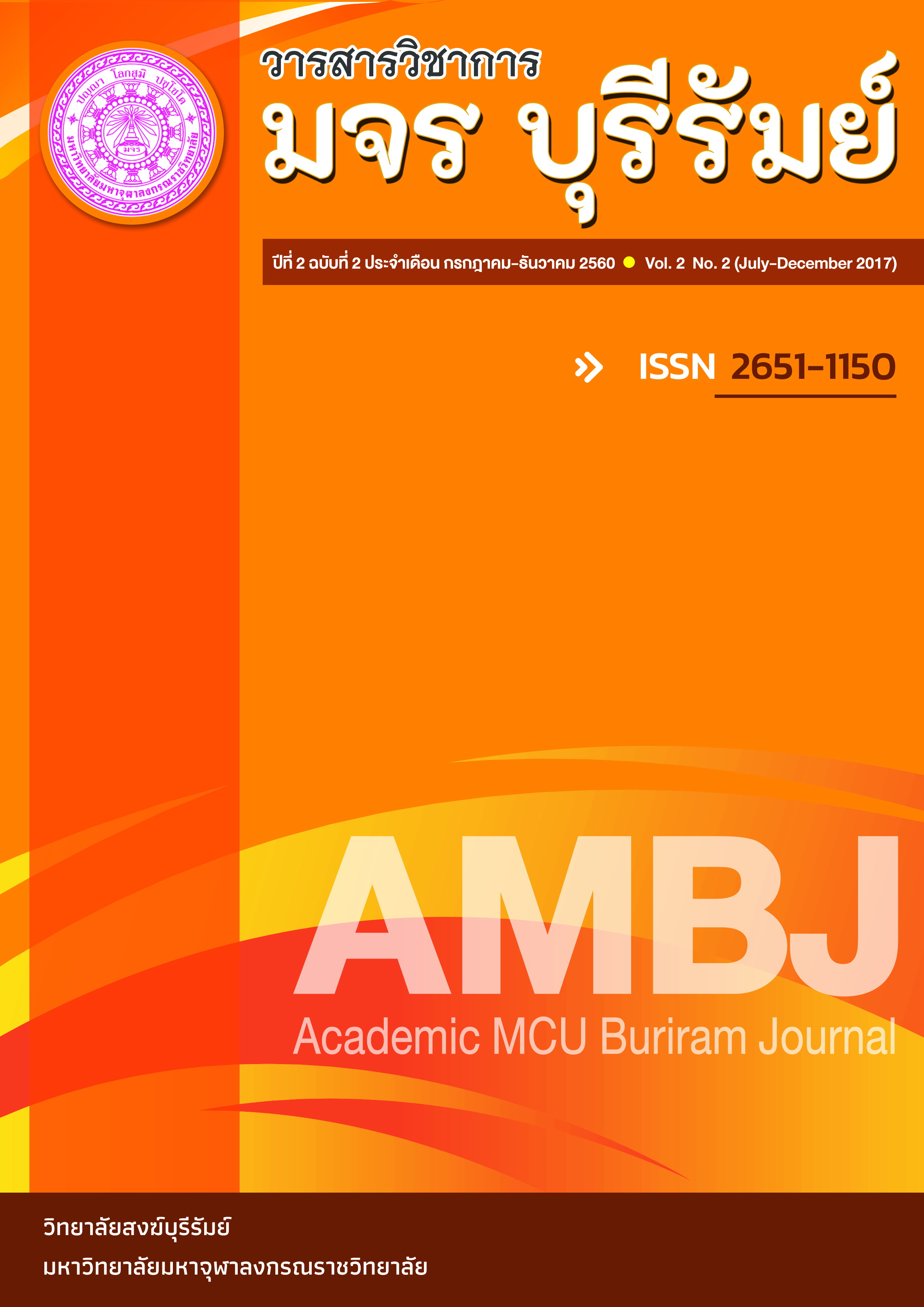The Existence of Niakuall Ethnic Groups in Chaiyaphum Province
Keywords:
Existence, Lifestyle, Niakuall Ethnic GroupsAbstract
Research “The Existence of Niakuall Ethnic Groups in Chaiyaphum Province” has the following objectives: 1) to study the way of life of the Niakuall ethnic groups in Thepsathit district, Chaiyaphum province and 2) to study the factors that cause change and existence of the Niakuall ethnic group in Thepsathit district, Chaiyaphum province. This research uses qualitative research methods. The tools used for data collection were an in-depth interviews. By using interview methods, the data contributors have 4 groups: 1) knowledge groups in communities that live in the community for more than 30 years, 2) local and informal leaders, both formal and informal, including the abbot, village leader, member of the Tambon Administrative Organization which these people have a work that is acceptable to the people in the community, 3) government agencies comprising cultural scholars, provincial culture, chairman of the Provincial Cultural Council, representative from Provincial Administrative Organization, representative from Tambon Administrative Organization, representatives of teachers and 4) villagers who live in communities that have knowledge of Niakuall ethnic groups.
The research found that
1) The traditional way of life of the Niakuall ethnic group in Thepsathit, Chaiyaphum province with a simple lifestyle and natural dependence. They have knowledge and wisdom about forests, wildlife, herbs, and native plants. The way of life is therefore bound to forests and mountains. There is a faith in the forest respecting Buddhists, but strictly carrying ghosts. They have language and dress as their identity. At present, the way of life of the Niakuall ethnic group is changed from the past as follows: 1) the social dimension of settlement is a large community. Marriage across ethnic groups causes social differences. The descendants of the Niakuall have received higher education and use technology to communicate and 2) cultural dimensions. The people of Niakuall quit their careers, finding forest and hunting. Dressing and language use are diverse due to the acceptance of other cultures.
2) Factors that affect the change of Niakuall ethnic groups in the region are 1) environmental and natural factors such as learning how to survive with a career that is more diverse than finding the forest and hunting wild animals and receiving support to promote projects from the government and various agencies.
Downloads
Published
How to Cite
Issue
Section
License
ทัศนะและความคิดเห็นที่ปรากฏในบทความวารสารฉบับนี้ถือเป็นความรับผิดชอบของผู้เขียนบทความนั้น ไม่ถือเป็นทัศนะและความรับผิดชอบของบรรณาธิการ




